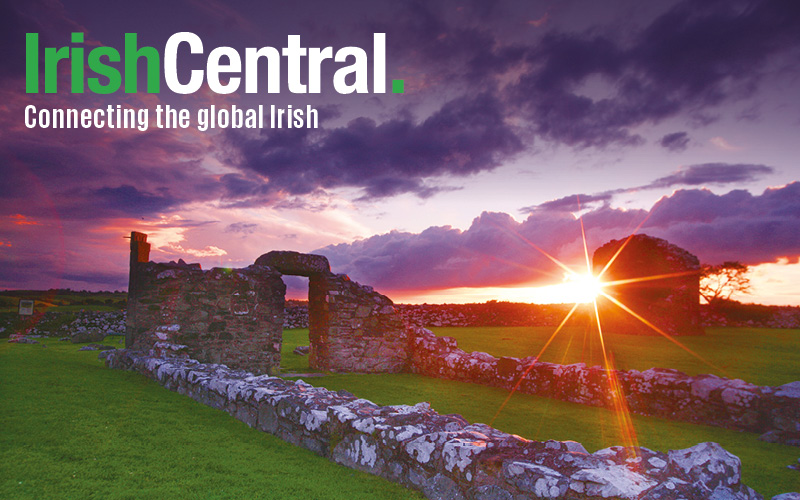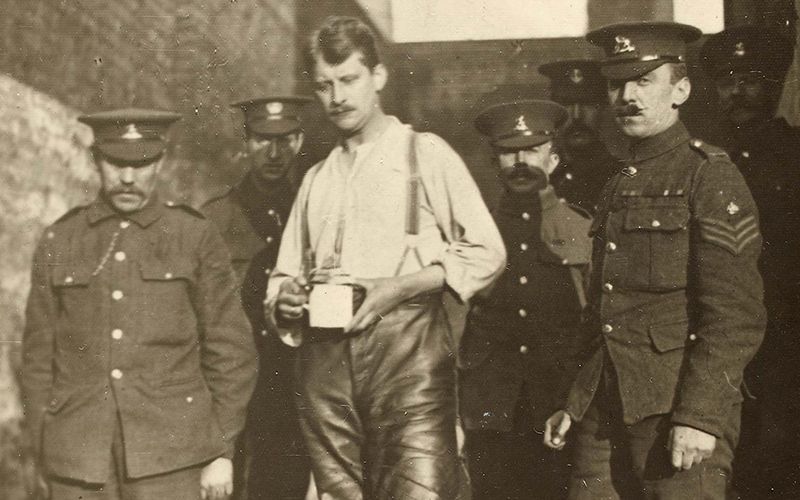The Patriarch: The Remarkable Life and Turbulent Times of Joseph P. Kennedy
By David Nasaw
You can’t understand the American 20th century without contemplating the Irish American family whose epic rise in many ways defined it. In David Nasaw’s magisterial study of Joe Kennedy, The Patriarch: The Remarkable Life and Turbulent Times of Joseph P. Kennedy, he explores the hardheaded pragmatism that was Kennedy’s central characteristic.
It can be difficult to remember from this standpoint in history that Joe Kennedy’s rise was a rags to riches story. But Kennedy himself never forgot.
Along the way to riches he encountered prejudice, discrimination and exclusion at every turn. These were the social and political barriers to an upstart Irish American that he overcame through smarts, entrepreneurship and self-belief.
Kennedy was a much more complex man than many historians have allowed to date, and in Nasaw’s book a complete portrait emerges of the man who went on to found the most powerful political dynasty of the 20th century.
Kennedy, Nasaw informs us, was never the bootlegger that some have suggested. What he was was a far seeing businessman who made millions from his own ingenuity.
Anticipating the Great Crash of 1929, for example, he liquidated his stocks and survived the Depression with his fortune intact. By the 1950s he was one of the richest meant in the world.
He was also, crucially, an attentive and loving father, and his passion for securing his families future in some ways shaped their political legacy too. Kennedy had raised his family to be comfortable in front of newsreels, and he coached his children (especially Jack) on how to speak on television.
Tragically he lived long enough to witness the assassinations of his two sons John Fitzgerald and Robert Kennedy, but he also understood that his family legacy had been secured, which was the principle that dove him throughout his life and career.
Nasaw presents a portrait of a devoted Irish father whose life’s work was to transform not only his family’s fortunes but also the world’s.
Penguin, $40
Notre Dame’s Happy Returns: Dublin, The Experience, The Game
By Brian O’Conchubhair and Susan Mullen Guibert
Thirty five thousand Irish Americans descended on Dublin for the Emerald Isle Classic football game between Notre Dame and Navy on September 1 of this year. But the relationship between Notre Dame and Ireland goes back much further.
In this handsomely produced book of photographs from the event, photographer Matt Cashore has selected nearly 200 of favorite images in large format pictures that capture the sights and sounds of that made the event so significant for both visitors and locals alike.
The book also underlines the university’s commitment to scholarship though the Keough-Naughton Institute for Irish Studies, which seeks to strengthen its ties to Ireland.
This is a remarkably illustrated portrait of the ancestral homeland, but it’s a living link and one that celebrates the diaspora’s achievements and enduring ties.
In the excitement surrounding the big game the bonds between the old world and the new world are renewed and this portrait captures that important moment for all future generations.
Notre Dame Press, $38
Gimme the Recipe
By Sheila Kiely
The title of this brilliant new Irish cookbook acknowledges the way most of us actually cook now – impatiently, and with an eye on the clock. But these easy to assemble Irish dishes are surprisingly sophisticated under the hood.
The avalanche of new Irish cookbooks in recent years are startling international food writers with their breadth of reference and popularity, but perhaps more than that they are surprising because they actually even exist. Until fairy recently Irish cuisine was not something most international food writers had even heard of.
All of that is changing with a burgeoning Irish cooking scene that’s producing more and more bona fide stars. Kiely’s new cookbook is a winner because you’ll find yourself returning to it more frequently than the high-toned fare that captures the attention of reviewers, if not their hearts.
Kiely has written the book for ordinary people in a rush (sound familiar?) and she helpfully divides it into three sections, which are roughly What’s for Dinner Tonight, Baking Day and Party Day.
Kiely knows how to produce an authentically delicious Irish spread, and after reading this book you’ll do likewise. It’s unpretentious, approachable and the results speak for themselves. Highly recommended.
Mercer Press, $29.95
By David Nasaw
You can’t understand the American 20th century without contemplating the Irish American family whose epic rise in many ways defined it. In David Nasaw’s magisterial study of Joe Kennedy, The Patriarch: The Remarkable Life and Turbulent Times of Joseph P. Kennedy, he explores the hardheaded pragmatism that was Kennedy’s central characteristic.
It can be difficult to remember from this standpoint in history that Joe Kennedy’s rise was a rags to riches story. But Kennedy himself never forgot.
Along the way to riches he encountered prejudice, discrimination and exclusion at every turn. These were the social and political barriers to an upstart Irish American that he overcame through smarts, entrepreneurship and self-belief.
Kennedy was a much more complex man than many historians have allowed to date, and in Nasaw’s book a complete portrait emerges of the man who went on to found the most powerful political dynasty of the 20th century.
Kennedy, Nasaw informs us, was never the bootlegger that some have suggested. What he was was a far seeing businessman who made millions from his own ingenuity.
Anticipating the Great Crash of 1929, for example, he liquidated his stocks and survived the Depression with his fortune intact. By the 1950s he was one of the richest meant in the world.
He was also, crucially, an attentive and loving father, and his passion for securing his families future in some ways shaped their political legacy too. Kennedy had raised his family to be comfortable in front of newsreels, and he coached his children (especially Jack) on how to speak on television.
Tragically he lived long enough to witness the assassinations of his two sons John Fitzgerald and Robert Kennedy, but he also understood that his family legacy had been secured, which was the principle that dove him throughout his life and career.
Nasaw presents a portrait of a devoted Irish father whose life’s work was to transform not only his family’s fortunes but also the world’s.
Penguin, $40
Notre Dame’s Happy Returns: Dublin, The Experience, The Game
By Brian O’Conchubhair and Susan Mullen Guibert
Thirty five thousand Irish Americans descended on Dublin for the Emerald Isle Classic football game between Notre Dame and Navy on September 1 of this year. But the relationship between Notre Dame and Ireland goes back much further.
In this handsomely produced book of photographs from the event, photographer Matt Cashore has selected nearly 200 of favorite images in large format pictures that capture the sights and sounds of that made the event so significant for both visitors and locals alike.
The book also underlines the university’s commitment to scholarship though the Keough-Naughton Institute for Irish Studies, which seeks to strengthen its ties to Ireland.
This is a remarkably illustrated portrait of the ancestral homeland, but it’s a living link and one that celebrates the diaspora’s achievements and enduring ties.
In the excitement surrounding the big game the bonds between the old world and the new world are renewed and this portrait captures that important moment for all future generations.
Notre Dame Press, $38
Gimme the Recipe
By Sheila Kiely
The title of this brilliant new Irish cookbook acknowledges the way most of us actually cook now – impatiently, and with an eye on the clock. But these easy to assemble Irish dishes are surprisingly sophisticated under the hood.
The avalanche of new Irish cookbooks in recent years are startling international food writers with their breadth of reference and popularity, but perhaps more than that they are surprising because they actually even exist. Until fairy recently Irish cuisine was not something most international food writers had even heard of.
All of that is changing with a burgeoning Irish cooking scene that’s producing more and more bona fide stars. Kiely’s new cookbook is a winner because you’ll find yourself returning to it more frequently than the high-toned fare that captures the attention of reviewers, if not their hearts.
Kiely has written the book for ordinary people in a rush (sound familiar?) and she helpfully divides it into three sections, which are roughly What’s for Dinner Tonight, Baking Day and Party Day.
Kiely knows how to produce an authentically delicious Irish spread, and after reading this book you’ll do likewise. It’s unpretentious, approachable and the results speak for themselves. Highly recommended.
Mercer Press, $29.95




Comments